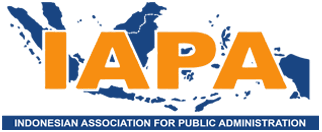Gender Equality and Social Inclusion (GESI) for Strengthening Disaster Resilient Village
DOI:
https://doi.org/10.21776/ub.jpas.2021.006.01.2Keywords:
GESI, disaster resilient village, systematic review, PRISMAAbstract
Gender equality and social inclusion (GESI) is essential to ensure gender equality and to achieve sustainable Disaster Risk Reduction (DRR). The implementation of decentralisation reform in developing countries has transferred roles of implementing DRR program to lower level of government including to community or village government. Hence, effective strategies to mainstream GESI in DRR activities in the community or village government is important to promote gender equality and to achieve sustainable development. However, what key issues and effective strategies to mainstream GESI in the lower level of community or village has not well-documented in developing countries. This study aims to identify key issues and GESI strategies for strengthening disaster resilient village based on existing literature in developing countries. Preferred Reporting Items for Systematic Reviews and Meta-Analyses (PRISMA) was used to identify GESI strategies for strengthening disaster resilient village in the existing literature. We able to find 142 studies related to GESI and disaster risk reduction in community level which published on SCOPUS, Web of Science, and Med Line between 2009 and 2019. From 142 studies we select 10 studies which are strongly relevant with the aim of this study. Five key issues are identified such as low human capital, patriarchal culture, resistance from traditional society, weak GESI institution and poor governance, and lack capacity of policy makers and implementers. There are four key GESI strategies area for strengthening disaster resilient in community level: (1) Organizational, (2) Capacity, (3) Operational, and (4) Resources. In the organizational area, the main strategy is provision of GESI sensitive policies and practices. In the capacity area, the main strategy is capacity development and lesson learning in the community disaster resilient program. In the operational area, the main strategy is embedding GESI in all phases of the community disaster resilient program. In the resources area, the main strategy is mobilizing funding and GESI expertise in the community disaster resilient program.References
Aguilar, L. (2012). Establishing the linkages between gender and climate change adaptation and mitigation Gender and climate change: An introduction. Routledge.
Aipira, C., Kidd, A., & Morioka, K. (2017). Climate change adaptation in Pacific Countries: fostering resilience through gender equality Climate Change Adaptation in Pacific Countries. Springer.
Amaratunga, D., Haigh, R., & Ginige, K. (2009). Mainstreaming gender in disaster reduction: why and how? Disaster Prevention and Management: An International Journal, 1(1) 3-6.
Bahadur, A., Lovell, E., Wilkinson, E., & Tanner, T. (2015). Resilience in the SDGs. Developing an Indicator for Target, 1. UNDP.
Bock, B. B. (2015). Gender mainstreaming and rural development policy; the trivialisation of rural gender issues. Gender, Place & Culture, 22(5), 731-745.
Bradshaw, S. (2015). Engendering development and disasters. Disasters, 39(1)54-75.
Buckingham, S., & Le Masson, V. (2017). Understanding climate change through gender relations. Taylor & Francis.
Drolet, J., Dominelli, L., Alston, M., Ersing, R., Mathbor, G., & Wu, H. (2015). Women rebuilding lives post-disaster: Innovative community practices for building resilience and promoting sustainable development. Gender & Development, 23(3), 433-448.
Esquivel, V., & Sweetman, C. (2016). Gender and the sustainable development goals. Gender & Development, 24(1), 1-8.
Etinay, N., Egbu, C., & Murray, V. (2018). Building urban resilience for disaster risk management and disaster risk reduction. Procedia engineering, 212 (1) 575-582.
Fordham, M., & Meyreles, L. (2013). Gender aspects of disaster management Disaster Management. Routledge.
Jones, L., & Bahadur, A. (2015). Options for including community resilience in the post-2015 development goals. Overseas Development Institute.
Mehta, M. (2009). Reducing disaster risk through community resilience in the Himalayas. Women, gender and disaster: Global issues and initiatives, 1(1) 57-74.
Moher, D., Liberati, A., Tetzlaff, J., Altman, G., & Group, P. (2010). Preferred reporting items for systematic reviews and meta-analyses: the PRISMA statement.
Morchain, D., Prati, G., Kelsey, F., & Ravon, L. (2015). What if gender became an essential, standard element of vulnerability assessments? Gender & Development, 23(3), 481-496.
Pearson, L., & Pelling, M. (2015). The UN Sendai framework for disaster risk reduction 2015–2030: Negotiation process and prospects for science and practice. Journal of Extreme Events, 2(01), 1571001.
Rashid, M., & Shafie, H. (2013). Gender and Social Exclusion Analysis in Disaster Risk Management Disaster Risk Reduction Approaches in Bangladesh. Springer.
Sohrabizadeh, S., Tourani, S., & Khankeh, R. (2014). The gender analysis tools applied in natural disasters management: a systematic literature review. PLoS currents, 6(1)1-7.
Szabo, S., Nicholls, J., Neumann, B., Renaud, G., Matthews, Z., Sebesvari, Z., . . . Kloos, J. (2016). Making SDGs work for climate change hotspots. Environment: Science and Policy for Sustainable Development, 58(6), 24-33.
Thapa, V., & Pathranarakul, P. (2019). Gender inclusiveness in disaster risk governance for sustainable recovery of 2015 Gorkha Earthquake, Nepal. International journal of disaster risk reduction, 34(1)209-219.
Thurairajah, N., & Baldry, D. (2010). Women's empowerment in post disaster reconstruction: Perspectives on policies and frameworks. International Journal of Strategic Property Management, 14(4), 347-361.
Wahlström, M. (2015). New Sendai framework strengthens focus on reducing disaster risk. International Journal of Disaster Risk Science, 6(2), 200-201.
Downloads
Published
Issue
Section
License
Copyright Statement
Authors who publish with JPAS agree to the following terms:
(1). Authors retain copyright and grant the journal right of first publication with the work simultaneously licensed under a Creative Commons Attribution License that allows others to share the work with an acknowledgement of the work's authorship and initial publication in this journal.
(2). Authors are able to enter into separate, additional contractual arrangements for the non-exclusive distribution of the journal's published version of the work (e.g., post it to an institutional repository or publish it in a book), with an acknowledgement of its initial publication in this journal.
(3). Authors are permitted and encouraged to post their work online (e.g., in institutional repositories or on their website) prior to and during the submission process, as it can lead to productive exchanges, as well as earlier and greater citation of published work (See The Effect of Open Access).
Permissions and reuse
For authors
Authors may use their own articles for the following non-commercial purposes without asking our permission (and subject only to acknowledging first publication in JPAS and giving a full reference or web link, as appropriate).
(1). Posting a pdf of their own article on their own personal or institutional website, for which no charge for access is made.
(2). Making a reasonable number of copies for personal or non commercial professional use.
This includes the contributors own teaching purposes.
(1). Republishing part or all of the article in a book or other publication edited by the author (except for multiple contributions in the same book or publication, for which permission needs to be sought.
(2). Using individual figures or tables or extracts of text (up to 300 words) in other publications published by a third party.
(3). Using the article in a course pack or compilation (whether paper or electronic) in the authors institution. This does not apply if a commercial charge is made for the compilation or training programme.
For third parties
All articles published by JPAS are published by default as open access.















